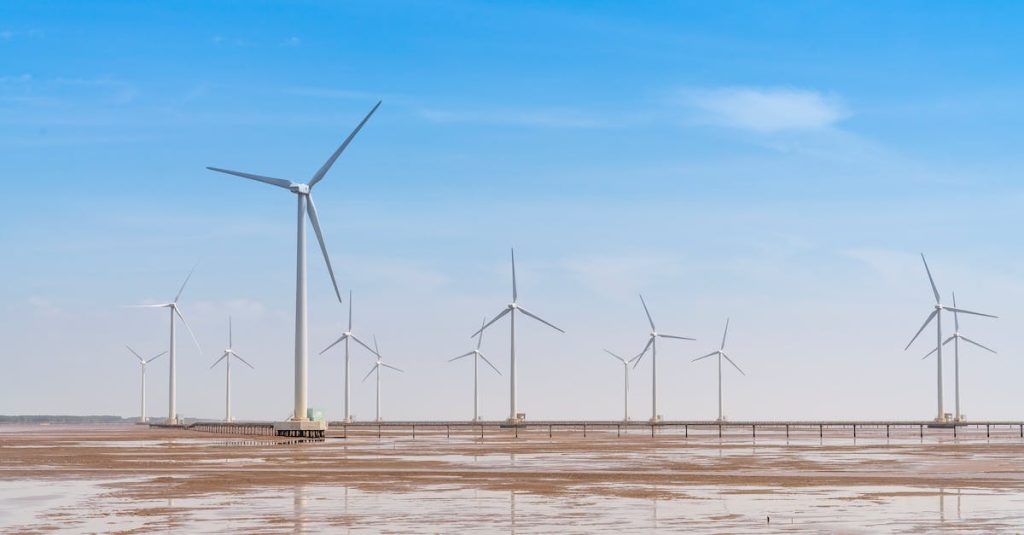Climate change is an urgent global issue needing immediate action, which is why many states across the United States, including New York, are intensifying their efforts to address this problem. A significant aspect of countering climate change is the promotion and implementation of renewable energy projects. However, the financial burden of supporting these projects falls heavily on the residents of these states. In some parts of upstate New York, people are already dedicating 10% of their utility payments to the state’s clean energy initiatives. The stakes are set to increase over the next 20 years, as New Yorkers may be expected to contribute even more, with an estimated $48 billion worth of projects that would likely be funded by consumers. This growing financial burden is a cause for concern for some residents, who are becoming more vocal about the long-term economic impact on their households.
Addressing the Concerns
Governments and utility companies need to address these concerns while promoting renewable energy initiatives. Striking a balance between the immediate needs of their constituents and the global necessity to reduce carbon emissions is essential. This situation presents challenges not just for governments but also for New York Democrats, who must now navigate the practical and political risks associated with the shift to renewable energy. These difficulties are a glimpse of potential obstacles that Democrats across the nation might face as they implement similar policies at the state and federal levels.
Challenges in Other States and Navigating Complex Regulatory Processes
States like New Jersey, Maryland, and California are also grappling with these issues, sometimes reassessing their ambitious renewable energy goals. Lawmakers must navigate complex regulatory processes and balance the needs of industry stakeholders and local communities while promoting clean energy. Rapid changes in energy sources have potential economic and societal impacts. Ensuring a smooth and successful energy transition that benefits everyone is crucial.
Supporters of clean energy transitions argue that the adoption of solar and wind power will eventually lead to lower energy expenses, significant health benefits, and a reduction in the worst impacts of climate change. They hope that federal funding from the Inflation Reduction Act will help alleviate consumer costs. However, some legislators, particularly upstate Democrats and moderates, are concerned about the possibility of moving too fast and causing a backlash due to increased expenses.
The Importance of a Balanced Approach
These legislators emphasize the importance of a balanced approach that considers both the benefits of clean energy transition and the potential financial implications for consumers. They suggest that carefully planned policies and strategic investments can help mitigate these concerns while still advancing toward a sustainable and efficient energy future.
New York has faced challenges in achieving its previous renewable energy targets due to permitting issues and inconsistent contracting efforts. The costs of the state’s renewable energy mandates are mainly being shouldered by residents and businesses through their electric bills, and the expected savings from this transformation might take longer to be realized. As a result, Democrats who control New York’s government must strike a balance between the long-term benefits of renewable energy and the immediate financial impact on consumers.
Revamping Regulations and Streamlining the Permitting Process
To address these challenges, the state government may need to revamp its regulations and streamline the permitting process for renewable energy projects. Additionally, fostering collaboration between public and private entities could lead to more efficient contracting efforts, ultimately benefiting both the environment and the economy in the long run.
In conclusion, while renewable energy initiatives and the drive to combat climate change are crucial, it is essential to strike a balance between the long-term benefits and the immediate financial impacts on residents. Doing so ensures a smooth and successful energy transition that benefits everyone, taking into account the global necessity to reduce carbon emissions.
Frequently Asked Questions
What is the financial burden of renewable energy projects on residents?
In some parts of upstate New York, residents are dedicating 10% of their utility payments to the state’s clean energy initiatives. Over the next 20 years, New Yorkers may be expected to contribute even more, with an estimated $48 billion worth of projects likely to be funded by consumers.
What challenges are faced by governments and utility companies in promoting renewable energy initiatives?
Governments and utility companies need to address concerns about the financial impacts of renewable energy projects on residents while promoting these initiatives. Striking a balance between the immediate needs of their constituents and the global necessity to reduce carbon emissions is crucial. Rapid changes in energy sources have potential economic and societal impacts, making the energy transition a complex and challenging process.
Are other states facing similar challenges with renewable energy goals?
Yes, states like New Jersey, Maryland, and California are also grappling with these issues and sometimes reassessing their ambitious renewable energy goals. Lawmakers must navigate complex regulatory processes, balance the needs of industry stakeholders and local communities, and promote clean energy at the same time.
What can be done to address the challenges and concerns surrounding renewable energy projects?
A balanced approach is critical in addressing these challenges. Legislators should consider the benefits of clean energy transition and the potential financial implications for consumers. Carefully planned policies, strategic investments, revamped regulations, streamlining the permitting process, and fostering collaboration between public and private entities can help mitigate these concerns while still advancing toward a sustainable and efficient energy future.
How can the immediate financial impact on consumers be balanced with the long-term benefits of renewable energy?
Democrats controlling New York’s government must strike a balance between the long-term benefits of renewable energy and the immediate financial impact on consumers by ensuring a smooth and successful energy transition. Investments in well-planned policies and fostering collaboration between public and private entities can help reduce the financial burden on residents while still working towards reducing carbon emissions and combating climate change.
First Reported on: politico.com
Featured Image provided by: Pexels – Thank you!





























